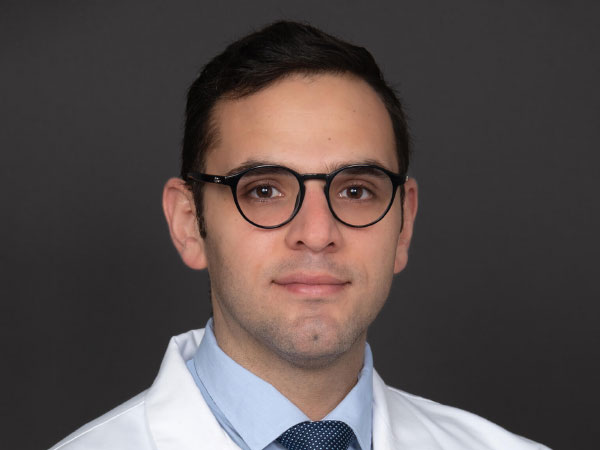NCI will immediately start the process of streamlining IND-exempt trials in order to make them faster, simpler, more flexible, less expensive, and easier to integrate with clinical practice, James Doroshow, NCI deputy director for clinical and translational research and director of the Division of Cancer Treatment and Diagnosis, said to The Cancer Letter.
On Nov. 9, the NCI Clinical Trials and Translational Research Advisory Committee approved an interim set of guidelines for streamlining requirements for conduct of clinical trials.
A story about the interm guidelines appears here.
The institute will first focus on the IND-exempt studies, because it has the capacity to implement protocol changes in such studies without seeking regulatory approval. However, NCI would continue its efforts by revamping trials that require INDs, and therefore FDA regulatory action.
“I think it was the right decision to first go after adult treatment trials, but also things that are IND-exempt,” Doroshow said, describing the recommendations accepted by CTAC. “These recommendations are something that we can implement right away.”
Altogether, 40% of the trials run through NCI’s Cancer Therapy Evaluation Program are phase II/III and phase III trials conducted with approved agents. “I want to make it clear, we are very interested in working with [FDA’s] Rick [Pazdur] and Marc Theoret to work on IND trials and see how we can decrease data requirements for those studies,” Doroshow said.
Doroshow spoke with Paul Goldberg, editor and publisher of The Cancer Letter.
James Doroshow: This is a big deal. It may save us all time, money, and complexity. I am especially excited, because it’s the first deliverable from the process we started two years ago, when we presented to CTAC and NCI a strategic plan for reforming clinical trials.
We basically focused on these issues as being the first things to tackle. And it was wonderful. It was a great subcommittee working group. I want to give full credit to Neal Meropol and Sumithra Mandrekar [co-chairs of the working group that produced the report].
Paul Goldberg: I loved the discussion. Nancy Davidson’s question was really interesting. And then the two responses were fascinating.
JD: I think it was the right decision to first go after adult treatment trials, focusing on things that are IND-exempt. These recommendations are something that we can implement right away.
And I want to make it clear, we are very interested in working with [FDA’s] Rick [Pazdur] and Marc Theoret to work on IND trials and see how we can decrease data requirements for those studies.
But this is something we can start with: 40% of the CTEP trials, the phase II/III and phase III trials, are with approved agents.
That is amazing. What would it accomplish? Wouldn’t it be much easier for people who are not in sophisticated academic centers to conduct trials?
JD: Let me give you two different ways of thinking about this.
One is: our colleagues who are very sophisticated and who develop trials know, because they interpret the results, that we are collecting lots of information that never reaches publication stage. So, why are we collecting that information?
The specific kind of things that people have been talking about for a long time are concomitant medications that have no impact on the protocol treatment that people are getting. Why are we collecting that information? I mean, the medications that do have a potential impact—great.
But we collect all of these things.
And what about the so-called attribution of adverse events?
There are complicated tables of possible, probable, and definitive attributions. And the reproducibility of those attributions, when this issue has been investigated by others, is poor.
Furthermore, I think data on when a particular adverse event starts and precisely the day it stops is basically a recipe, when you do audits, for finding things that people didn’t do precisely. And yet, after all that effort, what we want to know is, did patients have the adverse event? Did they have a grade 3 toxicity, or do they have a grade 2, which we’ll collect if it’s something that is relevant.
So, this is an important point. We don’t want to collect routine grade 1 and 2 AEs if they don’t have impact on treatment.
But a good example of when grade 2 toxicities should be collected would be for immunotherapies and kinase inhibitors that may cause significant chronic diarrhea. It may not meet grade 3 level, but it really has an impact on quality of life. And that information is almost certainly something that we’ll want to continue to understand, because it affects patients’ lives.
But where it really doesn’t affect the outcome of the study, where people spend a lot of time—and we pay for a lot of data management support—to figure out exactly what was the day that an AE started and when did it stop, does not make a lot of sense to collect.
And these are things that really don’t contribute to understanding the utility of the therapy.
I can’t tell you in my career how many laboratory tests were collected that were never evaluated, never part of the toxicity evaluation plan.
I’m sure it wouldn’t surprise you that templates get written and developed for trials, and they go on year after year. And what this great working group did was to say, “Well, there should be a reason for every piece of data that we collect. And if you can’t define explicitly the reason for collecting it, then why are we doing it?”
How did these mandates come to be? What the heck is that about?
JD: I wouldn’t use the word “mandates.”
I can show you protocols from 30 years ago that collected these data. It wasn’t clear why they were collected then, and they just got handed down. And without having people really, carefully thinking about why do we need this now, the same sets of data are collected over and over? Some of it is tradition, some of it is the concern that maybe the FDA would want these data when new therapies are being developed.
Often, they don’t, but they might.
Some data elements are collected as part of earlier-phase trials, where it might or might not be appropriate to do so. But for the most part we are talking about changing the data we collect for studies with drugs that have been given to thousands and thousands of patients already.
So, you really don’t need the toxicity data, which is what we’re talking about on this upcoming SWOG trial that’s being discussed. Pragmatica–Lung.
JD: You need the things that are significant, because if you had a therapy where A was better than B, but A has a lot more severe adverse events, even with known agents that has to be taken into account. So, that’s fine.
But we write down things that are not part of standard practice. And so, if you’re going to ask for additional imaging studies, and if you want more data in a clinical trial that wouldn’t be considered standard practice, it has to be justified.
The words “new normal” were very helpful. When I hear “new normal,” I understand it.
JD: I’m so excited about this, because it is a major extension of all the things we changed for COVID, to make things easier on patients, and to make things easier for doing trials. And now, I’m sure you’re very well aware of the issues related to personnel shortages in clinical trials offices.
That is a major problem.
And so, if you’re collecting fewer data elements, then it’s easier on the personnel. If you do this across enough studies, it’s going to be easier to do the trials with the people you have.
And this set of recommendations allows Monica to hit the ground running.
JD: Right. She knew about this way before she was appointed, since this involved a detailed analysis of a large number of Alliance trials, and since Sumithra is the head of the stats office for Alliance.
There is a consensus—I’m seeing it right now—and Monica is a part of that consensus. And it goes beyond NCI, and it goes into FDA, and it goes into the industry, and it goes into academia.
JD: We have to think about the cost of doing these studies, and there are limits, and so, we have to figure out how do we really get the most for our money to answer the question with the resources that we have?
Some of those questions that were being asked in the studies, as you say, are asked for traditional reasons, because, well, why not? Maybe it will become useful. And now it’s going to change.
JD: All I can say is I don’t know how things will go when we start negotiating with FDA about these same issues for IND-directed studies. I think these negotiations will go well. But what we can say is that for the studies that really are with standard-of-care agents, I think these changes can be implemented in the very near future.
And I believe that there will be strong support across the NCTN for doing this.
Absolutely. Is there anything I forgot to ask?
JD: I don’t think this was discussed at this meeting, because we were excited about how fast this went and how much consensus there was. But you’re aware of a recent paper that Andrea Denicoff [head of clinical trials operations for the NCI’s National Clinical Trials Network] published, which was an evaluation of the implementation of the Friends of Cancer Research, NCI, and ASCO changes in eligibility requirements.
I can’t tell you in my career how many laboratory tests were collected that were never evaluated, never part of the toxicity evaluation plan.
This was very well done and published. And so, Andrea and Meg Mooney [associate director of the Cancer Therapy Evaluation Program], did a very nice study, looking at a whole series of studies that were initiated with NCI support after the recommendations for expanding eligibility were put into practice. And then the question was, what was the adherence to those new recommendations across a large number of trials?
The bottom line is that for some of these recommendations the changes were very clear and very broadly initiated. I think one that stands out is the change in the ability to enroll patients who have controlled HIV infection; there’s no reason to exclude these patients.
But there are certain recommendations where—let’s just say that the change has not been fully implemented.
So, what that tells you is that anything that we institute in terms of these data collection changes, must be re-evaluated in a year or two years from now. We will have to take a very significant look at whether the changes we want to implement were implemented.
So, there will be follow-up. That’s the one thing that was not discussed, but I’m sure it was implied that once we make these changes, we have to make sure that the new protocols that get written really reflect this new approach.
Thank you.










